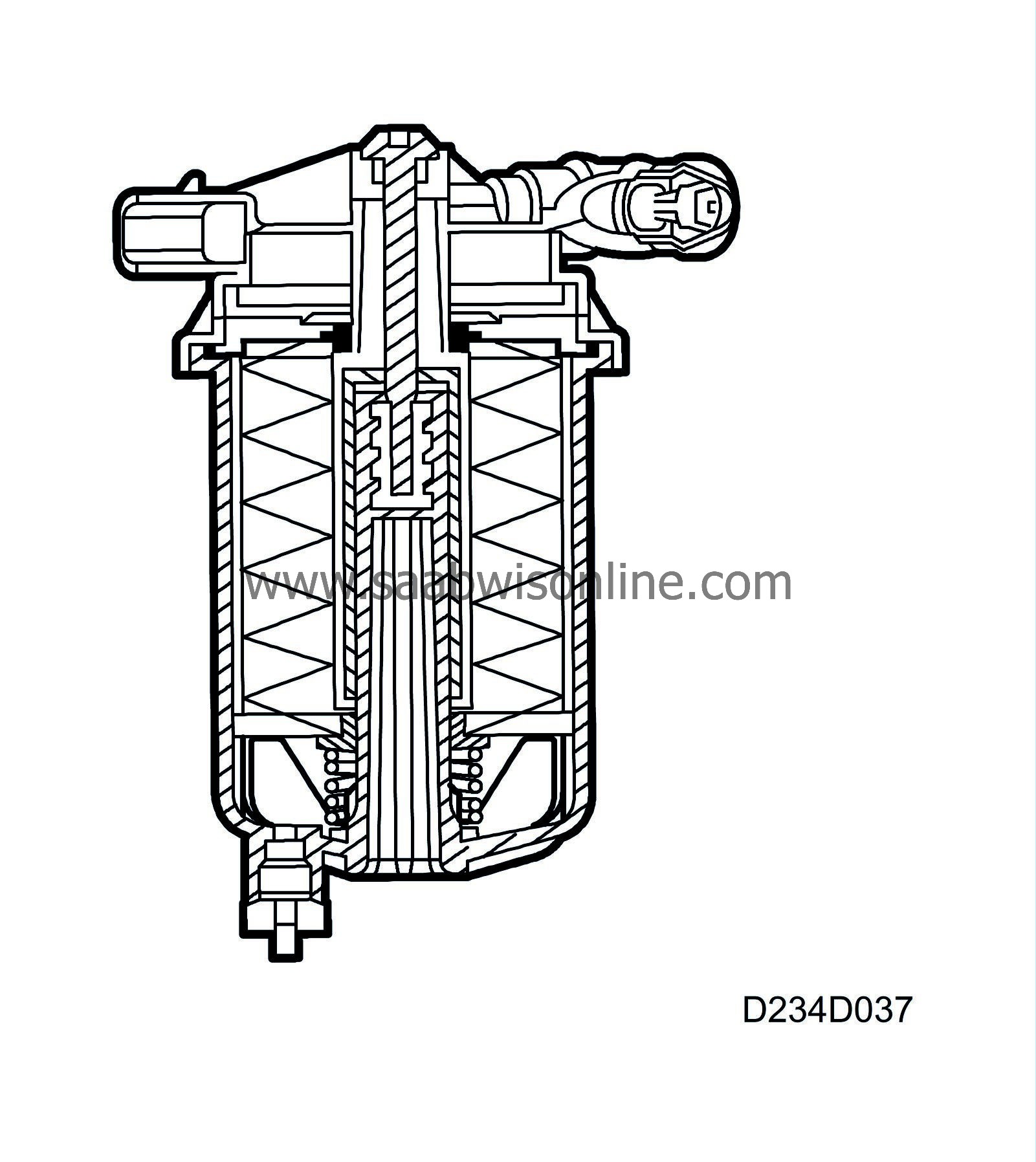Fuel flow, 4-cyl
| Fuel flow, 4-cyl |
Return fuel, i.e. unused fuel, flows back to the fuel tank, where it drives a negative ejector located in the fuel tank. In turn, the ejector fills the reservoir from which the diesel pump sucks fuel. In brief, an ejector is a cylinder with three openings, one in each short side and one in the cylinder wall. When fuel flows through the cylinder (in on one short side and out the other), a vacuum builds at the hole in the cylinder wall. This vacuum is used to suck fuel up from the fuel tank and keep the reservoir filled. This means that as soon as the engine is started, the ejector begins filling the reservoir so that there is always fuel on the suction side.
Because the fuel injection pump's feed pump sucks fuel in from the reservoir, fuel supply is guaranteed when taking curves and accelerating even if there is only a small amount of fuel remaining in the tank.
Engine control unit PSG 16 is mounted on the fuel pump. It calculates the amount of fuel to be injected into the cylinders and when it should occur.
For further information, see Control module, PSG 16 .



